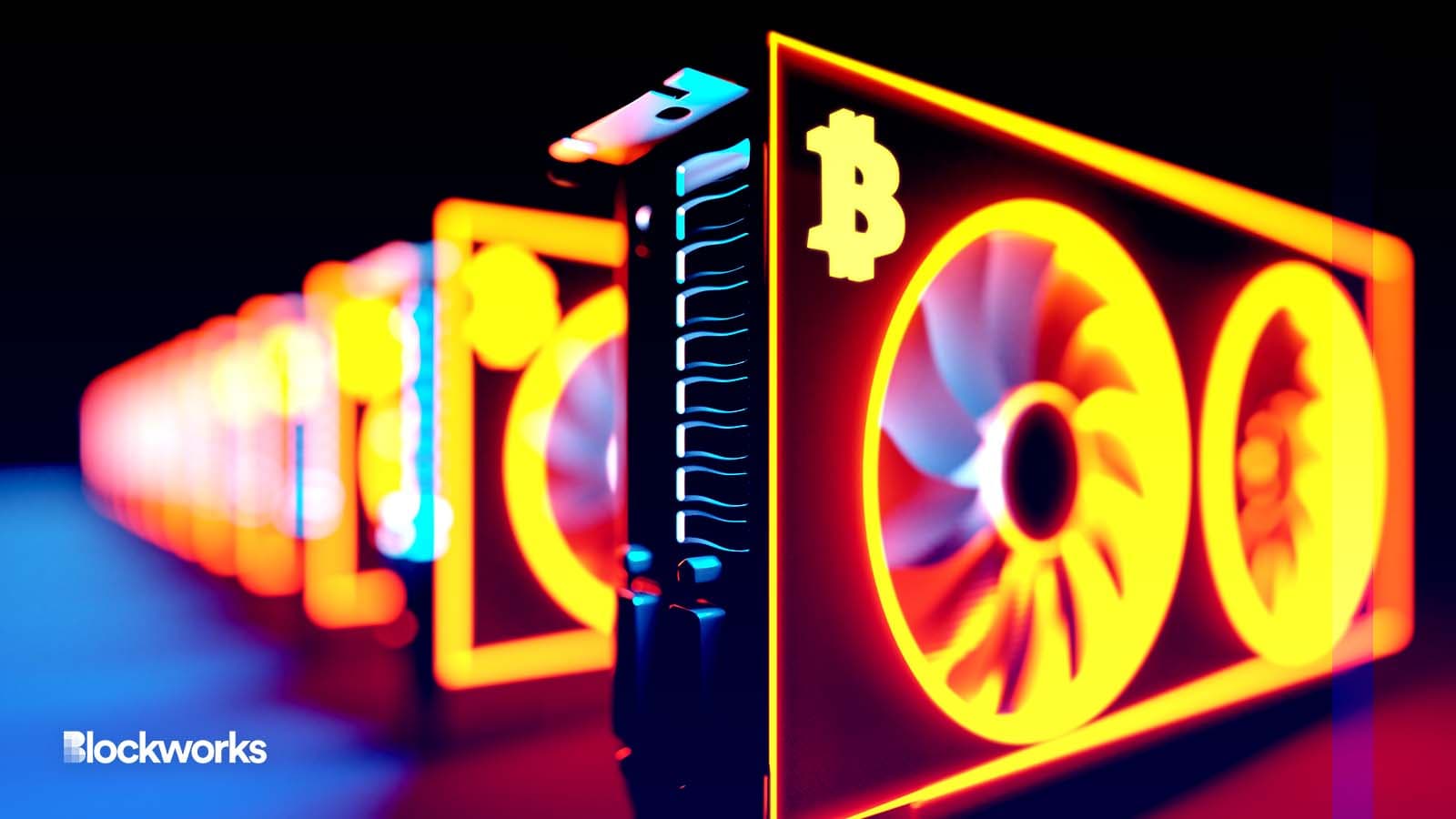Marathon CEO: ‘Diversity in Site Mix’ Is Key to Future Growth
Florida-based miner on track to grow capacity from 9.5 exahashes at end of February to 23 EH by mid-year before expanding to Abu Dhabi

GreenBelka/Shutterstock modified by Blockworks
Though one of the largest public bitcoin miners suffered a net loss of $687 million in 2022, Marathon Digital’s CEO says it remains on track to more than double its hash rate in the next few months and expand to a new region.
Marathon Digital’s deficit last year sprinted up from a $37 million loss in 2021. The company attributed the higher shortfall, in part, to “unfavorable variances” in a company announcement earlier this month.
A total of $651 million of the losses were unrelated to business operations, Marathon CEO Fred Thiel told Blockworks in an interview. They came in the form of impairment charges on the company’s mining rigs and digital assets — incurred when the value of an asset falls below the cost at which it was purchased.
Analysts at Compass Point Research and Trading maintained its buy rating of the stock in a research note last week, noting that it excludes non-cash impairments in its estimates.
Marathon’s stock price was $7.83 at 1:00 pm ET on Thursday — down about 1.5% on the day.
Compass Point lowered its price target from $11.50 to $10, as analysts expect the company’s share count to increase and bitcoin holdings to decrease. Marathon sold 650 of the 683 bitcoins it produced in February for operating expenses — a practice the company expects to continue, according to Thiel.
Hash rate growth, moving into UAE
The Florida-based miner is on track to fulfill its hash rate growth target from 9.5 exahashes (EH), as of Feb. 28, to 23 EH by mid-year, Thiel said.
It energized about 19,000 bitcoin miners last month, including 8,000 S19 XPs, Bitmain’s most recent ASIC hardware release in July 2022.
Not included in the expected 23 EH of computing power is Marathon’s upcoming entrance into the United Arab Emirates. The company revealed a joint venture with FS Innovation to build and operate two crypto mining sites in Abu Dhabi — amounting to 250 megawatts.
Thiel called the expansion the firm’s “first foray into vertical integration,” noting that the site would utilize self-designed immersion systems. Marathon began an immersion-cooled pilot project in November, which involves submerging mining servers in a dielectric fluid. It found that such technology could reduce the cost of servers when compared to using air-cooled setups.
“They have very warm summers, and then outside that period of time the temperature is quite mild,” Thiel said of the region. “[It’s] the perfect marriage to their energy situation where we can come in, take all that stranded energy and use it for bitcoin mining.”
Keep reading for more excerpts from Blockworks’ interview with Thiel.
Blockworks: What could stand in the way of Marathon meeting its goal of 23 EH of computing power by mid-year?
Thiel: Our build-out domestically right now is predominantly with Applied Digital.
We don’t see any hindrances there. Construction is well on its way, if not completed, at a number of the sites. Miners have already been delivered, so that’s not an issue.
So, if you typically think of the issues, of ‘do you have regulatory approval for the energy to energize, do you have construction completed, do you have your transformers installed and on site, and do you have your miners?’ In all cases, those items have all been taken care of.
Blockworks: How do you think about managing your bitcoin holdings going forward?
Thiel: If you go back to the 2021 period, the cost of capital was very low. It was easy to raise debt, it was easy to raise equity capital, and so it made sense to hodl all your bitcoin.
Then we go through 2022, [there’s] a big price decline, the markets get tighter. We still had a good ability to raise equity capital, so we focused, in the second half of 2022, on really strengthening our balance sheet, paying off all our current and revolving debt…and building a cash pile while continuing to build a bitcoin pile.
For this year and going forward…we’re going to sell bitcoin to cover operating expenses. We’ll look to hodl the rest, and so over time our bitcoin pile should continue to grow.
And, as we need capital for growth initiatives, we’ll leverage the capital markets for that.
Blockworks: What about potential acquisition opportunities?
Thiel: There are still a lot of miners who made investments in infrastructure — power and sites — and were not able to raise capital to either fully complete those sites or populate them with their own miners.
So there are a number of sites coming to market that miners like us could look at potentially investing in or acquiring. We’re very picky as we look at that.
The last thing we want to do is go and add a bunch of two-generation-old miners that may only have a year or two of good life on them and pay any sort of price for those.”
If an opportunity comes along where we can essentially acquire a site with a great power energy agreement, and it’s renewable energy predominately and there just happens to be miners there, we’ll definitely look at it. We probably won’t pay anything for the miners because what we’re really looking at is access to the energy and infrastructure.
We’re looking much more at a mix of sites going forward — self-designed and self-built, some third-party and then also joint venturing with folks. So I think you’ll see much more diversity in our site mix going forward.
This interview was edited for clarity and brevity.
Get the news in your inbox. Explore Blockworks newsletters:
- The Breakdown: Decoding crypto and the markets. Daily.
- 0xResearch: Alpha in your inbox. Think like an analyst.






